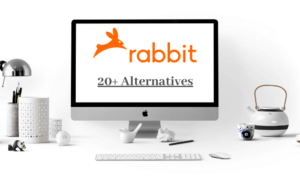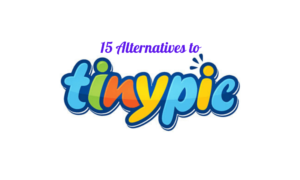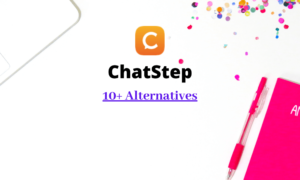In this quick guide, you will learn about the benefits of AWS Instance Scheduler, how you can use its features to achieve the desired results. But first, let’s understand a few essential things.
What Is AWS Instance Scheduler?
AWS Instance Scheduler helps you manage the start and stop of your Relational Database Service (Amazon RDS) or the Elastic Compute Cloud (Amazon EC2) instances using automation. You can reduce operational costs significantly by using the Amazon Web Services instance scheduler to mute idle resources and activate them only when needed. To meet capacity demands.
Consider this: a business can automatically use AWS Instance Scheduler in a production environment to shut down instances after hours. You can use Amazon Web Services tags and AWS Lambda to automate the starting and stopping of scheduled instances across multiple Amazon Web Services Regions and accounts, customizable to your defined schedule.
See Also: How to Choose the Best Web Hosting Provider
Why Use the AWS Instance Scheduler?
1. Cross-Account Instance Scheduler
You can leverage an efficient AWS template to create Identity and Access Management (IAM) roles required to start and stop secondary account instances.
2. Automated Tagging
AWS Instance Scheduler can add automated tags to every instance stopped or started. You get easy access to macros that allow enable you to add variable data to represent each tag.
3. Command Line Interface Instance Scheduling
Amazon’s solution also has a command-line interface (CLI) to enable you to structure commands to configure schedules. You can estimate cost savings for each scheduled instance accurately.
4. SSM Maintainance Window Scheduling
Aws Instance Scheduler enhances your interactions with EC2 instances by allowing you to use SSM maintenance windows to start, stop, and manage cases established within the same Regional account.
The Architecture of AWS Instance Scheduler
When setting up the system, you must define AWS Regions and accounts you will use to operate your business. Also, you will set a custom tag that the AWS Instance Scheduler will associate with your schedules regarding Amazon EC2 and Amazon RDS instances.
The AWS CloudFormation services facilitate Amazon CloudWatch events at your pre-defined intervals as a user and activate AWS Lambda. Values get registered in Amazon DynamoDB, where the Lambda function retrieves them whenever the instance is active.
A custom tag gets applied to relevant instances.
Remember that you define a tag key to identify applicable Amazon EC2 and Amazon RDS instances during the initial configuration of your Instance Scheduler. The specified tag name gets used as the identifying value for the schedule and linked resources.
For instance (no pun intended), you may use the schedule tag key to create a schedule for us-office-hours. To underline the scheduled instances that will operate on the us-office-hours schedule.
The cost of AWS Instant Scheduler remains independent of the total number of Amazon RDS and EC2 instances running. The solution provides compelling reading and writing capacity using on-demand scaling for Amazon DynamoDB tables by default.
You May Like: Cloudways Reviews 2021 (Pros and Cons) by Real Users
Understanding AWS Instance Scheduler Components
Scheduler Configuration Table
After deployment, the AWS Instance Scheduler creates an Amazon DynamoDB table containing global configuration settings representing a type attribute with the configuration value in the table. You can add, manage, or delete instance schedules using the configuration table created by DynamoDB or the solution’s command-line interface.
AWS Instance Scheduler
AWS Instances Schedule uses tag values to manage how Amazon EC2 and Relational Database Service behave. The tagged resources get identified by the scheduled name.
Periods
A schedule must have a minimum of one period to implement the run-time of an instance. Still, a scheduled instance can have multiple periods, and the Instance Scheduler will automate the starting process whenever one of the commands is active.
Time Zone
You can define the exact time zone for each scheduled to run in. Although you do not input a time zone, the default time zone you specified upon launching the system will get used.
Hibernate Field
You can use hibernation features to manage halted EC2 (Amazon) instances. An Amazon Machine Image (AMI) gets implemented when the hibernate field is made true. Content gets saved from the memory (RAM) onto your Amazon Elastic Block Store (EBS) root volume, and instances get hibernated when the system stops them.
Enforced Field
Schedules have an enforced field that helps prevent instances from getting started manually outside the operating period. And you can not stop it within its periods of running.
Retain Running fields
The retain running field feature prevents stopping instances after running periods if the model gets started manually before the period begins. For example, an instance with a period running from 9 am to 5 pm manually starts before 9 am; it will not stop at 5 pm.
SSM Maintenance Window Field
The SSM maintenance window field enables the automatic addition of an AWS Systems Manager maintenance window. The period gets added to a maintenance window account in the same region as your Amazon EC2 instance.
The CloudFormation system Enables SSM Maintenance windows in the solution stack to stay updated and load into the DynamoDB table used when running the AWS Lambda function.
Override Status Field
Instance schedules contain an Override Status Field that enables temporary system override to the solution’s start and stops functions. When you set the override field to running but still use the enforced field to stop an instance from being started manually outside running periods, the instance will stop. On the other hand, if the override status field gets set to stop, but the enforced field prevents it from being manually contained within the run-time, the instance will restart.
Instance Type
Amazon EC2 instance schedules allow you to define optional instance types for every period within a given schedule. But, remember that when you specify an instance type for a period scheduling Amazon EC2 instances and Amazon RDS instances, the Amazon RDS instance type will get ignored.
See Also: Can I Host QuickBooks in the Cloud?
Cross-Account Instance Scheduler
This solution includes an instance-scheduler-remote that creates AWS Identity and Access Management (IAM) roles that start and stop secondary account instances.
I hope you liked the quick guide on AWS Instance Scheduler. If you have any questions or suggestions, please use the comment box below.





















